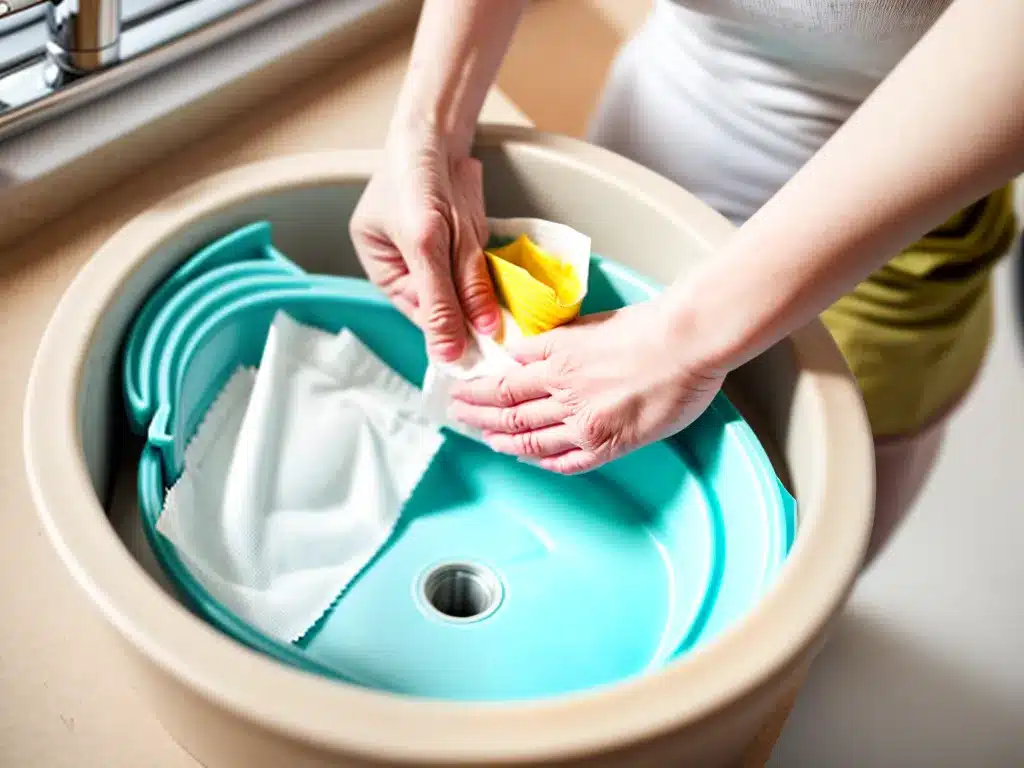The Problem with Disposable Wipes
Single-use disposable wipes have become ubiquitous in many households for quick and easy cleaning tasks. However, there are several downsides to using so many disposable wipes:
-
Environmental impact: Disposable wipes are made of polyester, polypropylene or cellulosic fibers. These materials don’t biodegrade easily and end up in landfills for centuries. Many wipes also contain chemicals and fragrances that can pollute waterways if flushed down toilets.
-
Cost: Buying box after box of disposable wipes can get expensive over time. The costs add up compared to reusable options.
-
Wastefulness: Billions of disposable wipes are thrown away each year in the US alone. All that waste could be avoided with reusable alternatives.
-
Sewer system clogs: Many people flush wipes down the toilet, even when the packaging says not to. This leads to clogged pipes, sewer overflows and equipment breakdowns at wastewater treatment plants.
Sustainable Reusable Options
Fortunately, there are many reusable and washable options that are better for the environment and also cost-effective over time. Here are some excellent disposable wipe alternatives to consider:
Microfiber Cloths
Microfiber cloths are super-absorbent synthetic cloths made from very fine microfiber strands. This material enables them to absorb liquids and grease easily.
Pros:
- Reusable for up to 300 washes
- Available in different sizes for all cleaning tasks
- Lint-free and durable
- Machine washable and quick drying
- Can be sanitized to reduce bacteria
Cons:
- Needs occasional deep cleaning to sanitize
- Over time, microfibers loosen and can shed in the laundry system
To minimize shedding, avoid using fabric softeners or bleach when washing microfiber cloths.
Cellulose Sponges
Sponges made from cellulose or plant fibers are biodegradable and compostable options. Look for sponges made from cellulose, cotton, bamboo, or other renewable materials.
Pros:
- Made of renewable materials, not synthetic fibers
- Biodegradable and compostable at end of life
- Reusable and durable for household cleaning tasks
Cons:
- Less absorbent than microfiber
- Needs thorough cleaning to prevent bacterial growth
Reusable Wipes
Reusable wipes are usually made of microfiber or organic cotton. They are thicker and more durable than paper towels.
Pros:
- Super absorbent and effective for cleaning
- Launderable and reusable over and over
- Available in multipacks of 20-50 wipes for convenience
Cons:
- Takes more effort than tossing disposable wipes
- Needs to be washed frequently to prevent bacterial growth
The best reusable wipes are made of tightly woven cotton or microfiber that is durable to withstand frequent washes. Choose a double stitch hem for durability.
Washcloths
Plain cotton washcloths are an economical and readily available option for reusable wipes.
Pros:
- Inexpensive and easy to find
- Made of natural materials
- Can be washed and reused indefinitely
Cons:
- Not as convenient as a packaged wipe
- Needs frequent laundering to prevent bacteria
- Less absorbent than microfiber or specially designed wipes
Washcloths work best for gentle cleaning tasks rather than heavy-duty disinfecting. Use very hot water for washing and avoid fabric softener for maximum absorbency.
Making Your Own Reusable Wipes
Making DIY reusable wipes is easy, customizible and saves money compared to buying commercial reusable wipes.
You will need:
- Old t-shirts, cotton rags or flannel (avoid synthetic fabrics)
- Scissors
- Waterproof container to store wipes (e.g. reusable plastic container or mason jar)
Steps:
- Cut fabric into squares. Aim for around 15x15cm or 6x6in squares.
- Make a stack of fabric squares.
- Put the stack into a waterproof container. Add water and a small amount of cleaning solution if desired. The solution can be as simple as a diluted mix of castile soap and water.
- Seal the container and let the fabric soak up the liquid.
- Pull out wipes from the container as needed for cleaning tasks.
- Once all wipes are used, throw them in the laundry. Repeat steps 3-5 with new solution.
The main advantages of DIY wipes are controlling the fabric type and solution ingredients. It’s easy to whip up a new batch whenever needed.
Proper Use and Disposal of Reusable Wipes
To get the most use out of reusable wipes and minimize environmental impact, keep these tips in mind:
- Regularly launder wipes after each use to prevent bacterial growth. Use hot water for sanitizing.
- Air dry or machine dry on low heat to avoid damaging microfiber.
- Avoid bleaches and fabric softeners when washing reusable wipes to maintain absorbency.
- Shake out lint from the dryer to prevent buildup on wipes over time.
- Wash microfiber separately to avoid shedding microplastic fibers. Consider using a laundry bag.
- Compost natural fiber wipes at the end-of-life rather than sending to landfills.
With proper care and usage, reusable cleaning wipes provide an eco-friendly way to tackle household cleaning while avoiding the waste of disposable wipes. The payoff is huge in terms of environmental impact and cost savings over time. Make the switch for more sustainable cleaning habits.







